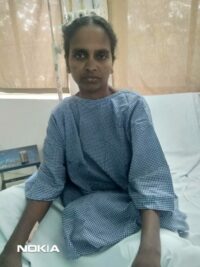Osmania, Niloufer hospitals perform liver transplant on infant with rare syndrome

Hyderabad: A liver transplantation for a rare genetic syndrome, NISCH (Neonatal Icthyosis Scalp alopecia Cholangio Hepatisis) Syndrome, in a small child, for the first time in India and fourth in the world, was performed by doctors at Osmania General Hospital (OGH) and Niloufer Hospital.
According to doctors, the eight-month-old child weighing 6 kg was referred with a diagnosis of NISCH syndrome to the department of Surgical Gastroenterology, OGH. The baby, daughter of an anganwadi worker and a daily wage earner from Jagtial, was initially managed at Niloufer hospital but in view of progressive liver failure with deep jaundice, Ascites and coagulopathy, was referred to OGH for liver transplantation.
The baby with rare syndromic features of NISCH had dry scaly skin (Icthyosis), no scalp hair (Alopecia) and also jaundice since birth apart from water formation in the abdomen (ascites).
The doctors initially sought to treat with drugs but that failing to yield results, decided to go for liver transplantation. The baby’s mother donated a portion of her liver.

Mother of the child, who donated liver.
According to Dr.CH Madhusudhan, Professor and Head, Department of Surgical Gastroenterology and Liver Transplantation, OGH, NISCH Syndrome is a very rare syndrome and till now only 18 cases were reported in world literature and only four cases underwent liver transplantation.
“This is the first patient who underwent liver transplantation for NISCH Syndrome in India,” he said.
In the procedure that spanned over 18 hours, the living donor liver transplantation was done at OGH with pediatric support from Niloufer Hospital.
Apart from Dr Madhusudhan, the team of doctors included Dr. Wasif Ali, Dr. Sudharshan, Dr. Adhitya, Dr. Varun, Dr. Venu, Dr.Amardeep from the surgical gastroenterology department, Dr.Pandu Naik, Dr. Madhavi, Dr.Venkateshwarlu, Dr.Sunil, Dr.Harish from anaesthesiology, Dr.Usha Rani and team from department of Paediatric and Dr.Ramesh Kumar and Dr.Umadevi from gastroenterology.







